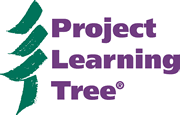When you hear the word “pollution,” what type of pollution do you think about? Knowing the characteristics of each of the five types of pollution, and what you can do to reduce the amounts, can make a positive difference for the environment.
Have students discover the birds living in their backyard or on their block by using their sense of hearing with these STEM activities. How many unique bird species can you identify using only their song?
Decomposers live off dead material and recycle nutrients into the soil for reuse by plants. These STEM activities teach students about producers, consumers, and decomposers.
Students identify some of their favorite and essential products that come from a renewable resource—trees!—and research how they are manufactured.
Ideas to engage elementary and middle school students in science, technology, engineering, and math as they learn about history, tradition, and storytelling.
Why do some organisms live in many environments while others are only found in very unique places? These STEM activities teach students about species diversity.
February 2 is World Wetlands Day! Use these ideas to engage middle school students in STEM as they explore wetlands and learn about why they are important.
There is much to know before planting a tree. These STEM lessons help students learn how to plant the right tree in the right place.
Use these STEM lessons to teach students the difference between a wildfire and a prescribed fire, and how fire can be beneficial to forests when it is planned and managed.
Engage students in STEM (science, technology, engineering, and math) as they explore why snags make excellent habitats for birds, mammals, insects, fungi, amphibians, and reptiles.

